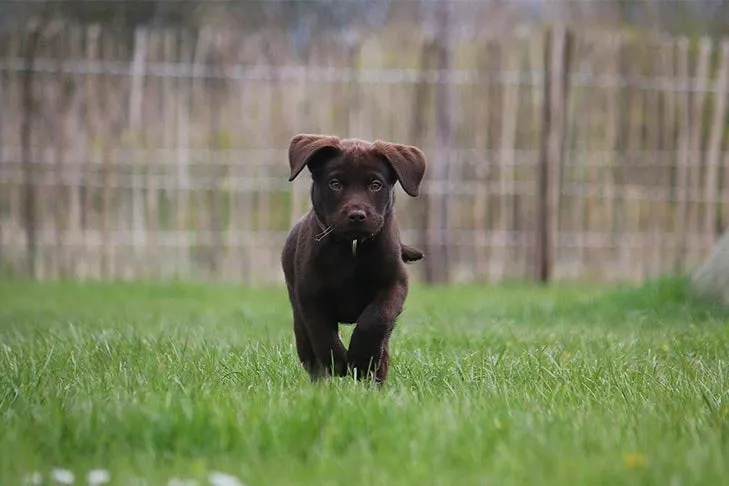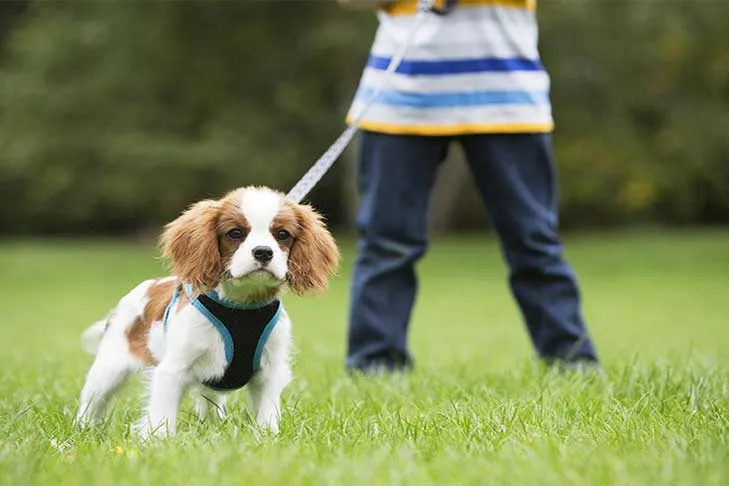Teaching your puppy to “come” when called, also known as a recall, is arguably one of the most critical commands you can instill. It’s not just a cute trick; a reliable recall is a life-saving skill that protects your puppy from dangers like traffic, keeps them from wandering off, and allows them the freedom to explore safely off-leash in appropriate environments. For any dog owner, especially those with a new puppy, understanding How Do I Teach My Puppy To Come is the cornerstone of a harmonious relationship and their safety. This comprehensive guide from Dog Care Story will walk you through proven positive reinforcement techniques to build a strong, enthusiastic recall, laying a solid foundation for your puppy’s lifelong training journey.
Building the Foundation: Principles of Effective Puppy Training
Before diving into the “come” command, it’s essential to understand the core principles that underpin all successful puppy training. These fundamentals ensure your training sessions are effective, positive, and enjoyable for both you and your puppy.
The Power of Positive Reinforcement
The foundation of effective training, including recall, is positive reinforcement. This method involves rewarding your puppy for desirable behaviors, making them more likely to repeat those actions. It’s about encouraging good choices, not punishing mistakes. Rewards can be anything your puppy values – high-value food treats, lavish praise, or a favorite toy. The goal is to build a strong association between the command, the desired action, and a positive outcome. Avoid punishment, such as yelling or leash corrections, as this can confuse your puppy, erode trust, and make them hesitant to come to you, especially in new or distracting environments. Patience and consistency are your best tools.
Keep Training Sessions Short and Sweet
Puppies have short attention spans. Keep your training sessions brief, ideally 5 to 10 minutes, and aim for multiple short sessions throughout the day rather than one long one. Always end each session on a positive note, even if it means reviewing a command your puppy already knows and rewarding them generously for their success. If your puppy seems bored or frustrated, it’s a sign to simplify the task or take a break. Prolonged or frustrating sessions can be counterproductive to learning and make your puppy dislike training.
The Value of Rewards
For a puppy to consistently come when called, the reward for doing so must be highly motivating. “High-value” treats are often the most effective – think small pieces of freeze-dried liver, cheese, cooked chicken, or even just their regular kibble if they find it exciting. Praise, enthusiastic verbal encouragement, and short play sessions with a favorite toy can also be powerful rewards. Remember, you’re not bribing your puppy; you’re teaching them that responding to your call leads to something wonderful.
 A black Labrador puppy runs across a grassy field towards a wooden fence, looking back at the camera.A strong recall is vital for your puppy’s safety and your peace of mind, especially in open spaces.
A black Labrador puppy runs across a grassy field towards a wooden fence, looking back at the camera.A strong recall is vital for your puppy’s safety and your peace of mind, especially in open spaces.
Step-by-Step: How to Teach Your Puppy to Come
Now, let’s get into the specifics of teaching your puppy the “come” command. Start in a quiet, distraction-free environment, such as indoors, to set your puppy up for success.
Phase 1: Building Positive Association (Indoors, No Distractions)
- Name & Treat Association: Sit with your puppy. Say their name, then immediately say “come” and give them a high-value treat. Repeat this several times. Your puppy doesn’t need to move yet; you’re simply building a positive association with the word “come.” Make it easy and fun!
- Adding Slight Movement: Drop a treat on the floor near you. As your puppy finishes eating it, say their name. When they look up at you, say “come” and give them another treat. Repeat this, gradually tossing the treat a little further away each time. The goal is for them to turn and face you when they hear their name.
- Encouraging Movement Towards You: Once they reliably turn to you, start adding more movement. Toss a treat a short distance away. As they eat it, take a few quick steps backward, crouch down, and excitedly call their name followed by “come!” As they run towards you, reward them with multiple treats and enthusiastic praise when they reach you. Make coming to you the most exciting game! If your puppy is easily distracted, you might want to consider specific strategies for how to train a border collie to come when called, as breeds with high prey drive often require extra focus.
Phase 2: Introducing Distance and Mild Distractions
- Play Chase Games: Continue the “come” game by tossing a treat, moving away, and calling your puppy. Make it a fun chase! Use different voices, gestures, and locations within your home. The more fun it is, the more enthusiastic your puppy will be.
- Practice in Different Rooms: Once your puppy consistently comes in one room, try practicing in other rooms of your home. Call them from another room, rewarding heavily when they find you.
- Utilize Another Person: With another family member, sit a short distance apart. One person calls the puppy, rewards them, then the other person calls. This teaches your puppy to come to whoever calls them. Keep distances short initially.
Phase 3: Moving Outdoors and Increasing Challenges
Once your puppy has a solid recall indoors, it’s time to gradually introduce outdoor environments and more distractions.
- Safe, Enclosed Area: Begin in a safe, fenced yard or a secure, enclosed dog park. Start with minimal distractions.
- Use a Long Leash: Keep your puppy on a 15-30 foot long leash or training line. This gives them the illusion of freedom but provides a safety net if they ignore your call. Practice the same games you did indoors. If they don’t come, gently reel them in with the long leash, and reward them when they reach you. Never yank the leash or scold them.
- Gradual Distraction Increase: Slowly introduce more distractions – a friend standing nearby, a quiet street, other dogs at a distance. Always ensure your puppy is on a long leash or in a secure area when practicing with distractions. If they are struggling, go back to a less distracting environment.
- Avoid Grabbing: When your puppy comes to you, avoid immediately reaching out and grabbing their collar. This can make some dogs wary. Instead, crouch down, praise them, offer treats, and gently reach for their collar after they’ve had a moment to enjoy their reward. This helps them associate collar grabs with positive experiences.
Essential Supporting Skills for a Reliable Recall
While “come” is the star of the show, other basic commands significantly enhance your puppy’s ability to respond reliably.
Loose-Leash Walking
A puppy who understands how to walk politely on a loose leash is generally more attuned to your presence and cues, even when distractions are present. This focus on you during walks translates into better responsiveness when you call them. Teach your puppy to walk by your side without pulling, rewarding them frequently for maintaining a loose leash. If your puppy tends to run ahead or dart off, mastering loose-leash walking will directly improve their recall responsiveness.
Teaching “Stay”
The “stay” command is a critical companion to “come.” It teaches your puppy self-control and the ability to hold a position until released. For example, if your puppy is about to chase something or approach a dangerous situation, a solid “stay” can buy you valuable time to get to them or call them back. Mastering how to teach my dog to stay involves building duration, distance, and distractions, paralleling the recall training process.
“Sit” and “Lie Down”
These foundational commands are excellent for gaining your puppy’s attention and establishing a baseline for control. If your puppy is distracted, asking for a “sit” or “down” before giving the “come” command can help refocus them on you, making them more likely to respond positively. Never force your puppy into these positions; always use positive reinforcement methods like luring or capturing the behavior.
Common Mistakes to Avoid When Teaching Recall
A reliable recall requires consistency and avoiding common pitfalls that can undermine your efforts.
- Calling for Unpleasant Things: Never call your puppy to you only to do something they dislike, such as bathing, leaving the dog park, or administering medicine. Always call them, reward them, and then release them, even if you do need to do something they don’t enjoy afterward. This keeps the “come” command positive.
- Punishing When They Come (Even Slowly): If your puppy eventually comes to you after a delay, never scold or punish them. This teaches them that coming to you leads to negative consequences, making them less likely to come next time. Always reward them for coming, no matter how long it takes.
- Repeating the Command Excessively: If your puppy doesn’t respond to “come” the first time, avoid repeating it over and over. This teaches them that the command is optional. Instead, go back to an easier step (e.g., reduce distractions, get closer, use a higher-value treat) where they can be successful.
- Expecting Too Much, Too Soon: Recall training is a gradual process. Don’t expect your puppy to have a perfect recall in a highly distracting environment after only a few indoor sessions. Work in small increments, building up distance, duration, and distraction levels slowly. For example, if you’re working on preventing unwanted behaviors like how to train puppy not to jump on couch or how to stop dogs jumping on couch, the same patience and incremental steps apply.
- Not Making Yourself Exciting Enough: In a world full of interesting sights, sounds, and smells, you need to be the most exciting thing for your puppy. Use an enthusiastic tone of voice, happy body language, and truly amazing rewards when they come to you.
 A small Cavalier King Charles Spaniel puppy sits on a leash on a patch of grass.Consistent, positive reinforcement makes coming to you a joyful experience for your puppy.
A small Cavalier King Charles Spaniel puppy sits on a leash on a patch of grass.Consistent, positive reinforcement makes coming to you a joyful experience for your puppy.
Conclusion
Teaching your puppy to “come” is an investment in their safety, your peace of mind, and the strength of your bond. By understanding how do I teach my puppy to come and consistently applying positive reinforcement, keeping sessions brief and fun, and making yourself the most rewarding presence, you’ll build a reliable recall that lasts a lifetime. Remember, every puppy learns at their own pace, so be patient, be consistent, and celebrate every small success. A well-trained puppy is a happy, safe puppy, ready to explore the world confidently by your side. If you’re also working on other essential skills, like how to kennel train a puppy at night, remember that consistency across all training areas will yield the best results.
Get started on your puppy’s training with AKC S.T.A.R. Puppy. This 6-week training program covers key skills like sit, down, and coming when called. Earn your puppy their first official AKC Title — it’s the perfect starting point for lifelong good behavior!
References
- American Kennel Club. (n.d.). Operant Conditioning: The Science Behind Positive Reinforcement Dog Training. Retrieved from https://www.akc.org/expert-advice/training/operant-conditioning-the-science-behind-positive-reinforcement-dog-training/
- American Kennel Club. (n.d.). Reliable Recalls: How to Train Your Dog to Come When Called. Retrieved from https://www.akc.org/expert-advice/training/reliable-recalls-how-to-train-your-dog-to-come-when-called/
- American Kennel Club. (n.d.). How to Teach Your Dog to Sit. Retrieved from https://www.akc.org/expert-advice/training/how-to-teach-your-dog-to-sit/
- American Kennel Club. (n.d.). How to Teach Dog to Lie Down. Retrieved from https://www.akc.org/expert-advice/training/how-to-teach-dog-lie-down/
- American Kennel Club. (n.d.). Teach Your Dog to Stay. Retrieved from https://www.akc.org/expert-advice/training/teach-your-dog-to-stay/
- American Kennel Club. (n.d.). Teach a Puppy to Walk on Leash. Retrieved from https://www.akc.org/expert-advice/training/teach-puppy-walk-leash/
